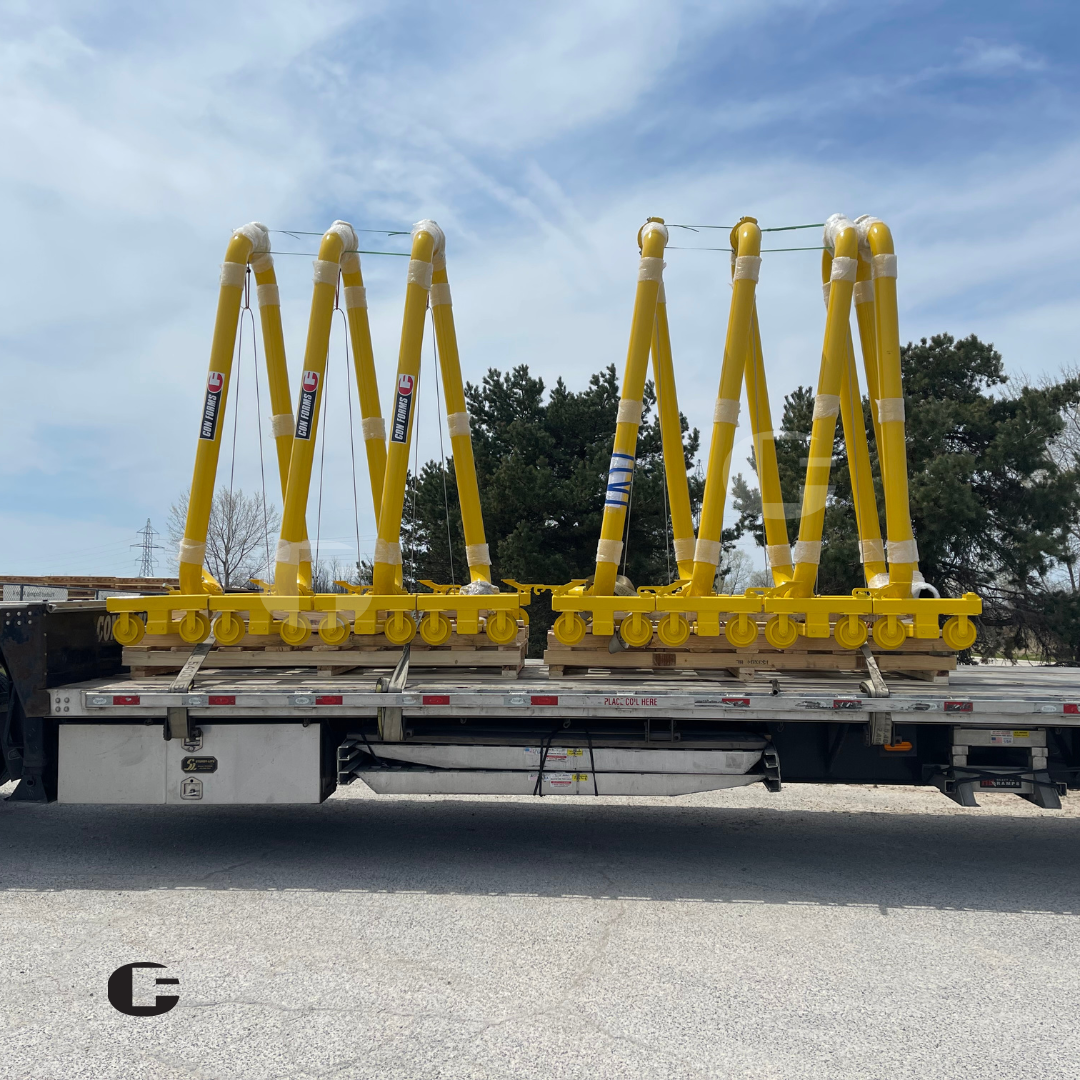Concrete pumping is a technology that revolutionized the construction industry. The ability to pump concrete allows workers to quickly and precisely place concrete in a wide variety of applications, from high-rise buildings to large-scale infrastructure projects. Having the ability to pump concrete enables quicker construction of these projects and ensures that there is minimal waste when transporting the concrete to its point of placement. Like any system, the reliability of a concrete pumping system is highly dependent upon its components.
One of the most important components within a concrete pumping system are the couplings (also referred to as clamps). Although they are often underappreciated, couplings play a pivotal role in holding the entire concrete delivery system together. Couplings help retain pressure, prevent leaks, and ensure the safe operation of the system. Without properly engineered couplings made of high quality materials, a concrete pumping system has the potential to be less efficient and considerably more hazardous.
In this article, we’ll delve into everything you need to know about the couplings used in the concrete pumping process, as well as how Con Forms makes their best-in-class couplings.

Understanding Couplings in Concrete Pumping
Couplings are designed to join together sections of pipe and hose to create a secure and leak-resistant connection within a concrete pumping system. They are incredibly important to a concrete pumping system, designed to support a tremendous amount of pressure, while allowing for flexibility and easy assembly during both setup and repair. Since concrete is a profoundly abrasive material, the pipe and hose within a concrete pumping system are subjected to considerable amounts of abrasion. While the coupling is not directly exposed to pumped concrete, they are used in harsh construction environments that can result in external damage and daily wear from standard usage.
Choosing the right coupling for your concrete pumping system is very important. Inferior couplings may fail—usually at the worst possible times. A failed coupling can cause leaks, pressure loss, and, in the worst cases, a catastrophic system failure. That is why Con Forms produces the best couplings available on the market, building each of our highly engineered designs from the best quality materials and putting them through a rigorous testing process.
There are three types of couplings that are widely used in concrete pumping systems: two-bolt couplings, one-bolt couplings, and snap couplings. Each type of coupling has its own unique traits, benefits, and drawbacks. Below, we’ve summarized what you need to know about each type of coupling.
Two-Bolt Couplings: Strength and Reliability
Two-bolt couplings are the strongest of the three designs, which makes them the ideal choice for the highest pressure applications (up to 300bar or 4,350PSI). These couplings provide a system with an incredible amount of containment strength, ensuring that the pipes and hoses stay connected under even the highest levels of pressure.
Snap Couplings: Quick and Convenient
Snap couplings, also known as “easy-open” or “quick-release” couplings, are known for their ability to quickly be attached or detached. They utilize a hinge mechanism with a locking pin that allows the user to secure or open them without any additional tools, making them a great choice for applications where couplings need to be regularly removed/replaced. This ease of use does come with drawbacks. Snap couplings don’t hold up as well against pressure as two-bolt couplings, so they are limited to applications up to 150bar or 2,175PSI. They must also be placed to avoid external forces that could accidentally force them open. Protection from accidental opening is the purpose of the locking safety pin and it must be in place for every coupling in the system.
One-Bolt Couplings: Simplicity and Efficiency
One-bolt couplings are balanced between the strength and rigidity of two-bolt couplings and the ease of use of snap couplings. One-bolt couplings are very similar in design to two-bolt couplings but with half the bolts, making them easier to use and faster to secure and remove than two-bolt couplings. One-bolt couplings are used in applications that require frequent adjustments without compromising security and integrity. They may also be chosen for tight areas on equipment (some boom truck turrets, for example) where their position makes access and installation more difficult.
Specialty Couplings
In addition to the aforementioned types of couplings, Con Forms also offers a wide variety of specialty couplings. Some of our most popular specialty couplings are aluminum couplings, swivel couplings, and restricted access swivel couplings. Each of these couplings is designed with special performance or applications in mind.
Material Selection and Durability
Of course, any component is only as strong as its material. Because couplings in concrete pumping systems are subjected to a tremendous amount of performance and environmental stress, it is important for your couplings to be CPMA-certified and made of the highest quality materials.
Why Choose Con Forms For Your Concrete Pumping Component Needs?
Couplings play a vital role in the concrete pumping process, ensuring that the system maintains pressure, avoids leaks, and operates safely. Choosing the right coupling for your application is essential for optimal performance and safe use. Con Forms offers a wide range of high-quality couplings to fulfill all of the applications in concrete pumping operations.
When you choose Con Forms for your concrete pumping components, you can be confident that you are getting the best possible products. Our commitment to quality and customer satisfaction sets us apart from the competition. Contact us today to learn more about our couplings and how they can benefit your concrete pumping operation. Together, we can elevate your concrete pumping to new heights of efficiency and reliability.



